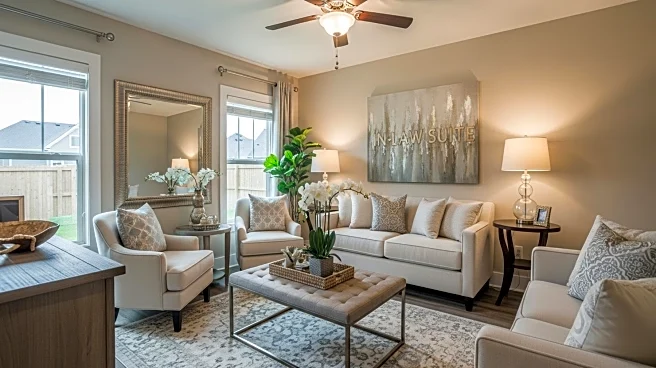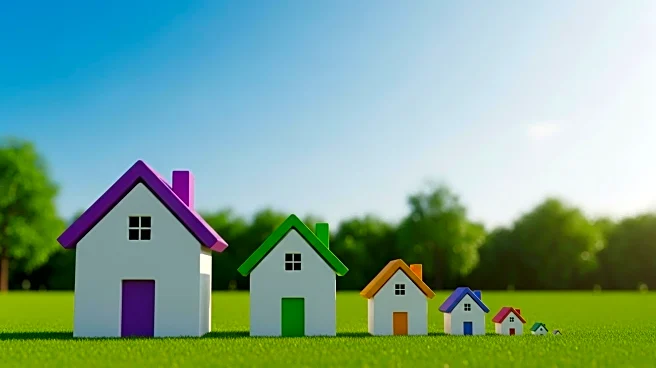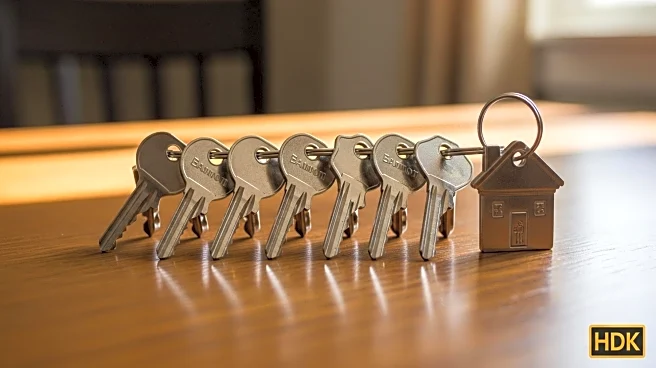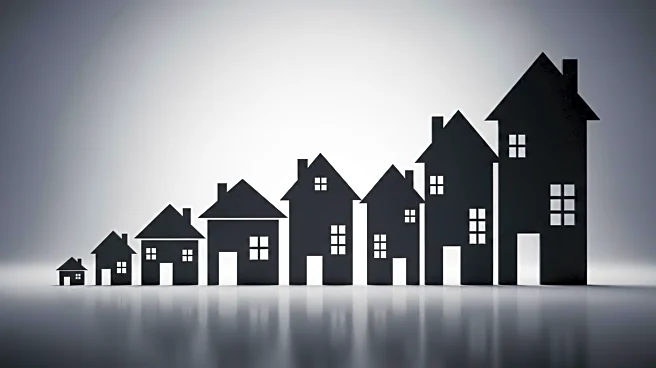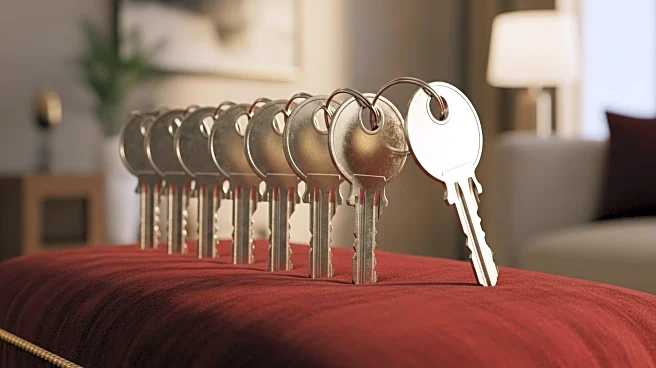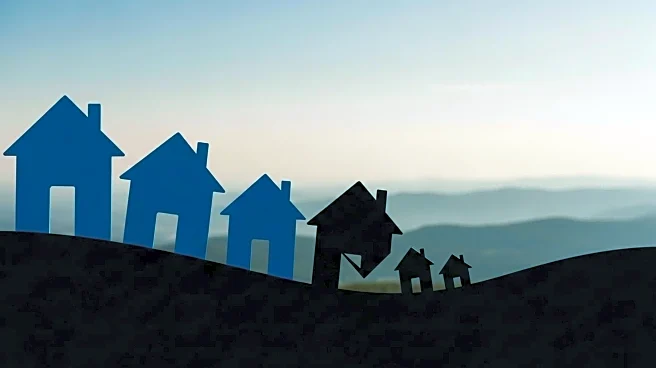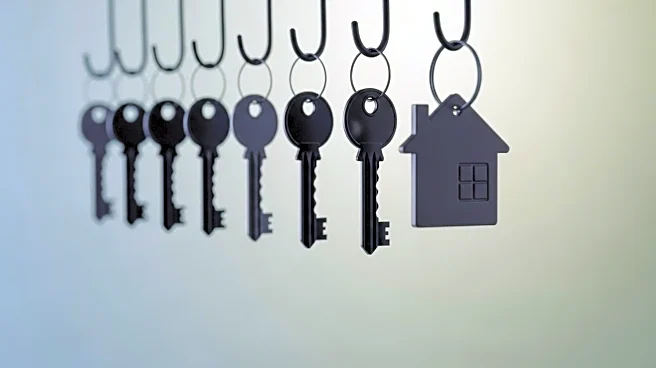What is the story about?
What's Happening?
The current real estate market is prompting many potential home buyers to explore alternative housing solutions due to high home prices and mortgage interest rates exceeding 6%. One such solution gaining popularity is the inclusion of in-law suites in homes, which cater to multigenerational living. According to the Pew Research Center, the percentage of multigenerational homes increased from 7% in 1971 to 18% in 2021. This trend is driven by the rising cost of housing, as noted by researchers at the Wharton School at the University of Pennsylvania, who have observed a decline in housing affordability over recent decades. In-law suites provide a viable option for families looking to share living spaces while maintaining some level of independence.
Why It's Important?
The rise in multigenerational living arrangements, facilitated by in-law suites, reflects broader economic challenges faced by home buyers. These suites offer a cost-effective way to achieve homeownership, especially for those priced out of the traditional market. By accommodating multiple generations under one roof, families can share expenses and resources, potentially easing financial burdens. This trend could influence future housing designs and policies, as developers and policymakers may need to consider the growing demand for homes that support multigenerational living. Additionally, the inclusion of in-law suites can enhance property value and appeal, making them a strategic investment for homeowners.
What's Next?
As the demand for multigenerational homes continues to grow, real estate developers and urban planners may increasingly incorporate in-law suites into new housing projects. Homeowners considering adding such suites should be prepared for potential increases in property taxes, which vary based on location and the size of the addition. Buyers interested in homes with existing in-law suites should seek detailed tax information to avoid unexpected costs. The trend towards multigenerational living is likely to persist, driven by economic factors and changing family dynamics, potentially reshaping the housing market landscape.
Beyond the Headlines
The shift towards multigenerational living raises important cultural and social considerations. It challenges traditional notions of family independence and privacy, requiring adjustments in family dynamics and living arrangements. This trend also highlights the need for communities to support diverse housing options that cater to different family structures. As more families embrace multigenerational living, there may be increased demand for community resources and services that accommodate these households, such as shared amenities and public transportation options.
AI Generated Content
Do you find this article useful?
